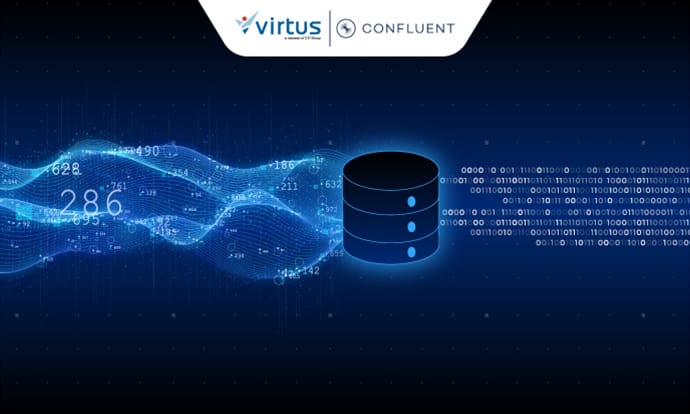Remember when “real-time” meant waiting minutes, or even hours, for data updates? Those days are rapidly disappearing. In today’s hyper-connected world, where 5G networks and edge computing are reshaping our digital landscape, true real-time data processing isn’t just possible – it’s becoming essential for business survival.
The numbers tell a compelling story: IDC projects the global datasphere will explode to 175 zettabytes by 2025, with real-time data growing exponentially. But here’s what makes this truly fascinating: the convergence of 5G, edge computing, and IoT is creating a perfect storm that’s transforming how businesses handle this data deluge.
What is Data Streaming?
Data streaming has evolved far beyond simple real-time processing. Think of it as your business’s nervous system – constantly sensing, analyzing, and responding to changes in your environment. While traditional batch processing is like reading yesterday’s newspaper, data streaming is like having a continuous news feed that updates by millisecond.
What’s driving this evolution? The rise of edge computing has fundamentally changed the game. With processing power moving closer to data sources, organizations can now analyze and act on information in microseconds – a capability that seemed like science fiction just a few years ago.
Consider this: Gartner predicts that by 2025, 75% of enterprise-generated data will be created and processed outside traditional centralized data centers. This shift is revolutionizing how businesses approach real-time decision-making.
Benefits of Data Streaming: The Real Impact

Data streaming empowers organizations to harness the full potential of real-time data, driving transformative change across various business functions. Here’s how:
1. Real-Time Decision Making
Respond instantly to market dynamics, customer behavior shifts, and operational changes. Proactive interventions become possible, maximizing opportunities and mitigating risks in the moment.
2. Enhanced Operational Efficiency
Optimize processes, predict and prevent equipment failures, and automate critical responses. This leads to reduced downtime, improved resource allocation, and increased overall productivity.
3. Elevated Customer Experience
Craft personalized experiences, anticipate customer needs, and provide proactive support. Real-time data enables targeted offers, relevant promotions, and timely issue resolution, fostering customer loyalty.
4. Accelerated Innovation
Fuel data-driven product development, service delivery, and business model evolution. Real-time insights reveal emerging trends and customer preferences, driving the creation of cutting-edge offerings.
5. Strengthened Risk Management & Compliance
Mitigate security threats, detect fraudulent activities, and ensure adherence to regulatory requirements. Real-time monitoring enables proactive risk mitigation and maintains compliance, safeguarding your business.
6. Optimized Costs & Increased ROI
Minimize downtime and maintenance expenses, reduce waste through efficient resource allocation, and prevent financial losses. These combined savings contribute to a healthier bottom line and maximize your data streaming investment.
How Modern Data Streaming Works
Today’s data streaming architecture looks vastly different from even five years ago. Edge computing has pushed processing closer to data sources, while 5G enables unprecedented data velocity. Here’s how it all comes together:
- Smart Data Ingestion: The rise of IoT and 5G has exponentially increased data sources. Modern systems don’t just collect data – they intelligently filter and prioritize it at the edge, reducing bandwidth needs and processing costs.
- Distributed Processing: Edge computing has revolutionized how we process streams. Instead of sending everything to central servers, initial processing happens closer to the source, enabling microsecond response times.
- Intelligent Storage: With data volumes growing exponentially, smart storage strategies are crucial. Modern systems use AI to determine what data to process immediately, what to store, and what to discard.
Real-World Applications: Data Streaming Use Cases

Data streaming is transforming how businesses operate across every major industry. Let’s explore how leading organizations are leveraging streaming data to achieve remarkable results and gain competitive advantages in their respective sectors.
1. Banking and Financial Services
A major European bank transformed its fraud detection capabilities through advanced data streaming, processing over 1 million transactions per second with real-time analytics. Their platform prevented US$500 million in potential fraud last year while enabling instant credit decisions and automated trading operations. This shift from batch processing to real-time streaming has redefined what’s possible in financial services security and customer service.
2. E-commerce
Amazon’s implementation of data streaming technology showcases the future of digital retail. Their platform processes billions of customer interactions daily, enabling 2.5 million price adjustments and managing inventory across global warehouses in real-time. This streaming infrastructure allows them to deliver personalized experiences at scale while maintaining instant responsiveness to market changes and consumer behavior.
3. Manufacturing
Tesla’s gigafactories demonstrate how data streaming revolutionizes modern manufacturing. Their production facilities utilize thousands of sensors streaming real-time data to optimize operations continuously. This implementation has yielded impressive results: 23% waste reduction and 35% quality improvement through automated, real-time production line adjustments. It’s a clear example of how streaming technology transforms traditional manufacturing into smart, efficient operations.
Challenges of Implementing Data Streaming
While data streaming offers significant benefits, implementing it effectively presents several key challenges:
Availability
- Continuous Operation: Data streaming systems must operate 24/7 without downtime. Ensuring high availability requires robust infrastructure and failover mechanisms.
- Data Loss Prevention: Systems must be designed to handle network issues or hardware failures without losing data.
Scalability
- Handling Volume and Velocity: As data sources increase, the system must scale horizontally to manage the load without degradation in performance.
- Resource Management: Efficient allocation of computational resources is essential to maintain cost-effectiveness.
Reliability
- Data Accuracy: Ensuring the data processed is accurate and consistent is critical. Systems must handle duplicate messages or out-of-order events.
- Fault Tolerance: The platform should recover gracefully from failures, maintaining data integrity.
Complexity
- Integration with Existing Systems: Incorporating data streaming into legacy systems can be complex, requiring careful planning and expertise.
- Skill Requirements: Developing and maintaining data streaming applications may require specialized skills and knowledge.
Addressing these challenges often necessitates choosing the right data streaming platform that provides the necessary tools and features to manage complexity and ensure reliability.
Confluent Data Streaming
Confluent is a leading data streaming platform built on Apache Kafka. It simplifies the process of implementing data streaming by providing an enterprise-ready platform that connects disparate data sources, processes real-time data streams, and delivers data where it’s needed.
Confluent enables organizations to harness the power of real-time data without dealing with the complexities of managing underlying infrastructure.
Key Features of Confluent
- Publishing and Subscribing to Data Streams
Confluent allows systems to publish data streams (producers) and others to subscribe to them (consumers). This pub/sub model ensures efficient data flow from sources to destinations in real-time. For example, a producer can send transaction data, and multiple consumer applications can process it simultaneously for fraud detection, analytics, or reporting. - Reliable Data Storage
Data stored in Confluent is both secure and fault-tolerant. By replicating data across multiple nodes, Confluent ensures that even if a server fails, the data remains accessible and intact. This reliability is crucial for mission-critical applications where data loss is unacceptable. - Stream Processing
Confluent provides tools for processing and transforming data streams on the fly. Users can perform computations, aggregations, filtering, and enrich data as it flows through the system. This capability allows for immediate insights and actions, such as triggering alerts or updating dashboards.
Advantages of Confluent over Other Solutions
- Ease of Use: Confluent offers a user-friendly interface and comprehensive documentation, making it easier for organizations to adopt and implement data streaming.
- Scalability: Built to handle massive data volumes, Confluent scales seamlessly as your data grows.
- Integration Capabilities: With a wide range of connectors, Confluent integrates with existing systems and data sources effortlessly.
- Managed Services: Confluent provides managed solutions that reduce operational overhead and allow businesses to focus on leveraging data rather than managing infrastructure.
Data Streaming Products from Confluent
Confluent offers two main solutions designed to meet various data streaming implementation needs in your organization.
1. Confluent Platform
Confluent Platform is a flexible solution designed for deployment in various environments, including on-premises, cloud, or hybrid infrastructures. It gives businesses full control over their data streaming infrastructure.
- Customizable Deployment: Tailor the platform to meet specific performance, security, and compliance requirements.
- Advanced Features: Access to enterprise-grade features such as security enhancements, multi-tenancy, and monitoring tools.
- Ideal for: Organizations that require complete control over their infrastructure and want to manage their data streaming environment internally.
2. Confluent Cloud
Confluent Cloud is a fully managed, cloud-native service that simplifies data streaming operations.
- Ease of Use: Get started quickly without the need for complex setup or infrastructure management.
- Scalability: Automatically scales to meet your data streaming demands, ensuring consistent performance.
- Cost-Effective: Operates on a pay-as-you-go model, reducing capital expenditure.
- Ideal for: Businesses that want to leverage data streaming capabilities rapidly without investing in infrastructure or specialized personnel.
Learn More: Streamline Your Data Operations with Confluent
Experience Confluent Data Streaming with Virtus
Are you interested in exploring how data streaming can revolutionize your business operations? Virtus Technology Indonesia, an authorized distributor and part of the CTI Group, offers a free demo lab to showcase the capabilities of Confluent Data Streaming.
- Hands-On Experience: Dive into real-world scenarios and see how Confluent can address your specific challenges.
- Expert Guidance: Work with our team of experts who can provide insights, best practices, and technical support.
- Tailored Solutions: Understand how data streaming can be customized to fit your industry’s needs, whether in banking, e-commerce, financial services, or manufacturing.
Virtus is committed to helping businesses leverage advanced technologies to drive innovation and efficiency. Contact us today and take the first step towards transforming your business with Confluent Data Streaming.
***



























